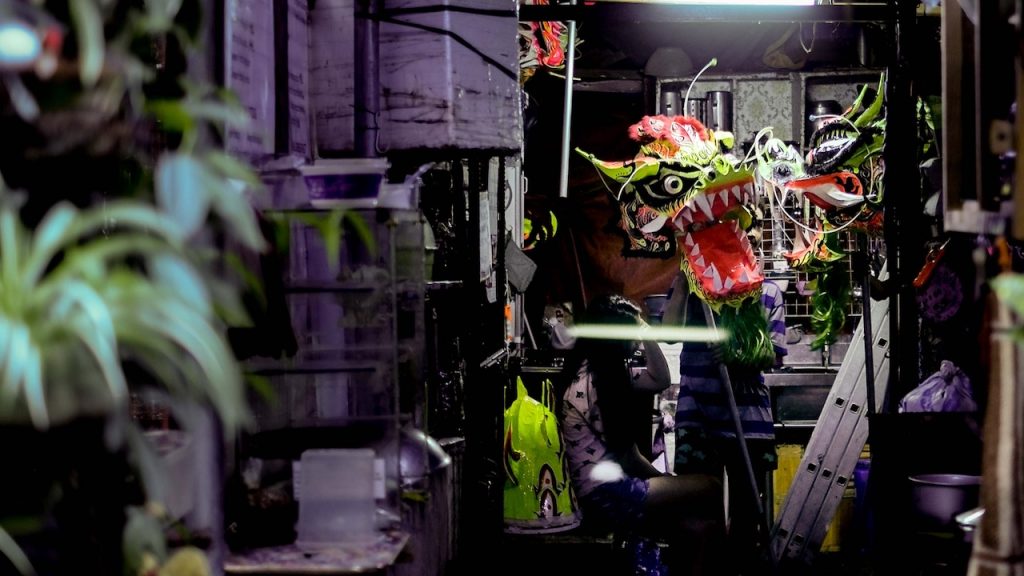
It was a gloomy afternoon. Therry Sicat was applying finishing touches to his dragon head and masks. The red fur for the lion’s head was already ready on the side.
The dragons and lions were supposed to dance in this year’s Chinese New Year celebrations. The coronavirus pandemic, however, relegated them to a corner of a shopping mall.
The anxiety brought about by the coronavirus pandemic started last year when news about the disease started to spread about the time of the Chinese New Year.
This year was more difficult. The noisy, colorful festivities in Manila’s Chinatown, supposedly the oldest in the world, was gone. The dragon and lion dancers were nowhere to be seen.
The family of Therry Sicat, who designs and makes dragon and lion heads, lost their main source of income. They still have their lions and dragons, but only for display.
“In the past, we would easily earn about Php 700,000 a year,” said Claire Sicat, the 68-year-old matriarch of the family that has been creating costumes since 2004 in Manila’s Binondo district.
“Last year, we were just lucky we made just enough for us to survive the many months in lockdown,” she said.
All the family members play important roles in the making of the dragons and the lions.
The 31-year-old Therry is the artist of the family. He decides on the colors to be used on the costumes.
“You we need to be meticulous with the level of quality of our product so that clients will continue to patronize us,” he said.
Obet, the eldest of the Sicat siblings, is the tailor. He is responsible for stitching and sewing all the pieces. He insists on using high quality materials for his dragons and lions.
“I only use genuine sheep’s fur and skin,” he said, adding that artificial ones break easily and are “not good for our business.”
The other siblings and family members design the costumes, choreograph the dances, and market the family’s services.
Beside their clients in Manila’s Chinatown, the family also serves shopping malls, banks, and even local government units outside of the Philippine capital.
“When the pandemic lockdown started, everything was lost,” said Jojo Sicat, the second eldest of the siblings.
CIaire said the government prohibition on the dragon and lion dances was “exaggerated.”
Chinese New Year festivities in Manila usually last for a week, attracting tourists, both local and foreign. It used to be the busiest week for business during the year.
With the prevailing general community quarantine, however, gatherings and merry-makings in the streets are banned.
For the Sicat family and the other families who survive on the business of the festivities, the pandemic is a catastrophe. Shops were closed, and dragon and lion dancers lost their jobs.
Before the Sicats would hire 20 dancers during the New Year, this year it is down to three.
The Philippine Statistics Authority said the Philippines suffered its “worst” economic performance in 2020 since World War II, with the country’s Gross Domestic Product shrinking to 9.5 percent.
This Chinese New Year, the Sicats, like many other Filipinos, are praying that their luck would turn for the better so that the dragons and lions can dance again.
Source: Licas Philippines
0 Comments